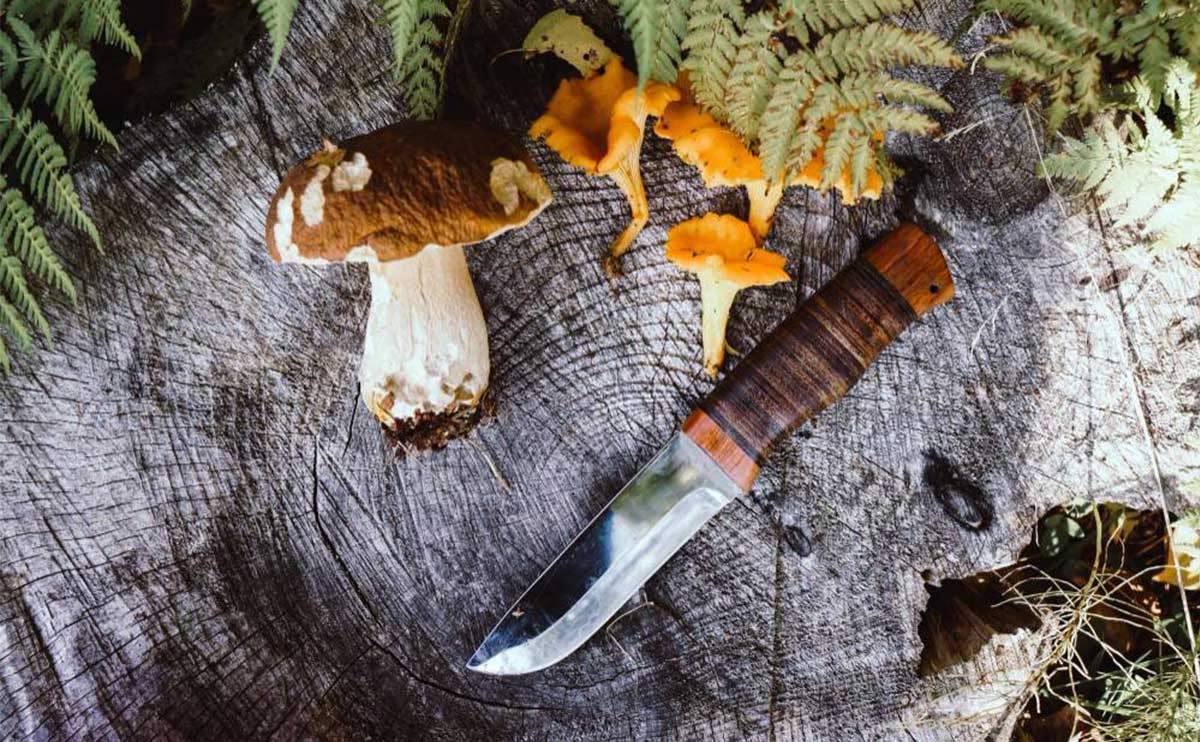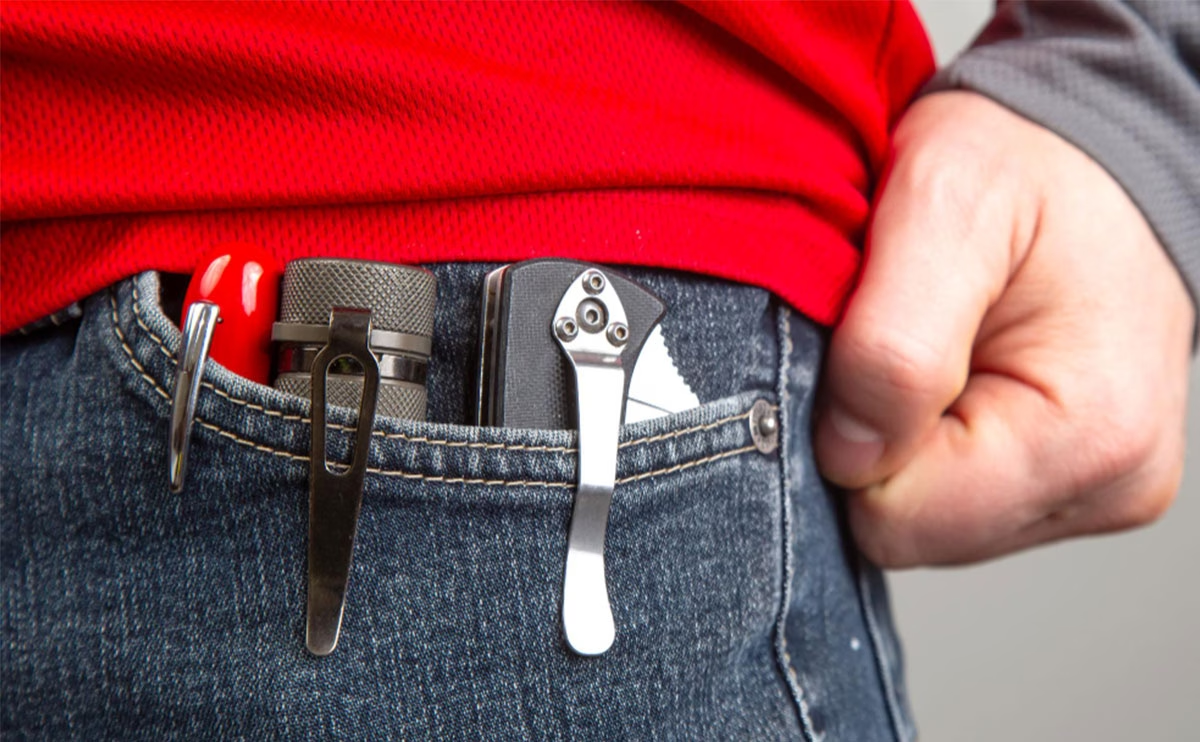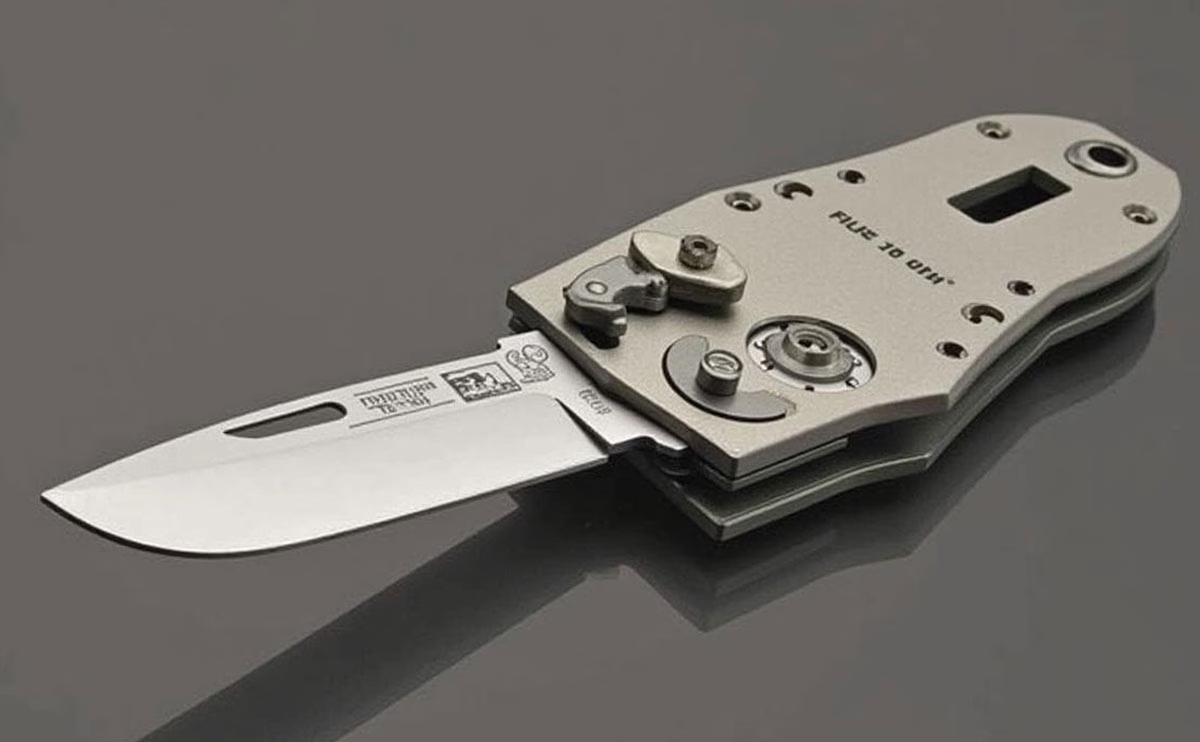What is an OTF Knife?
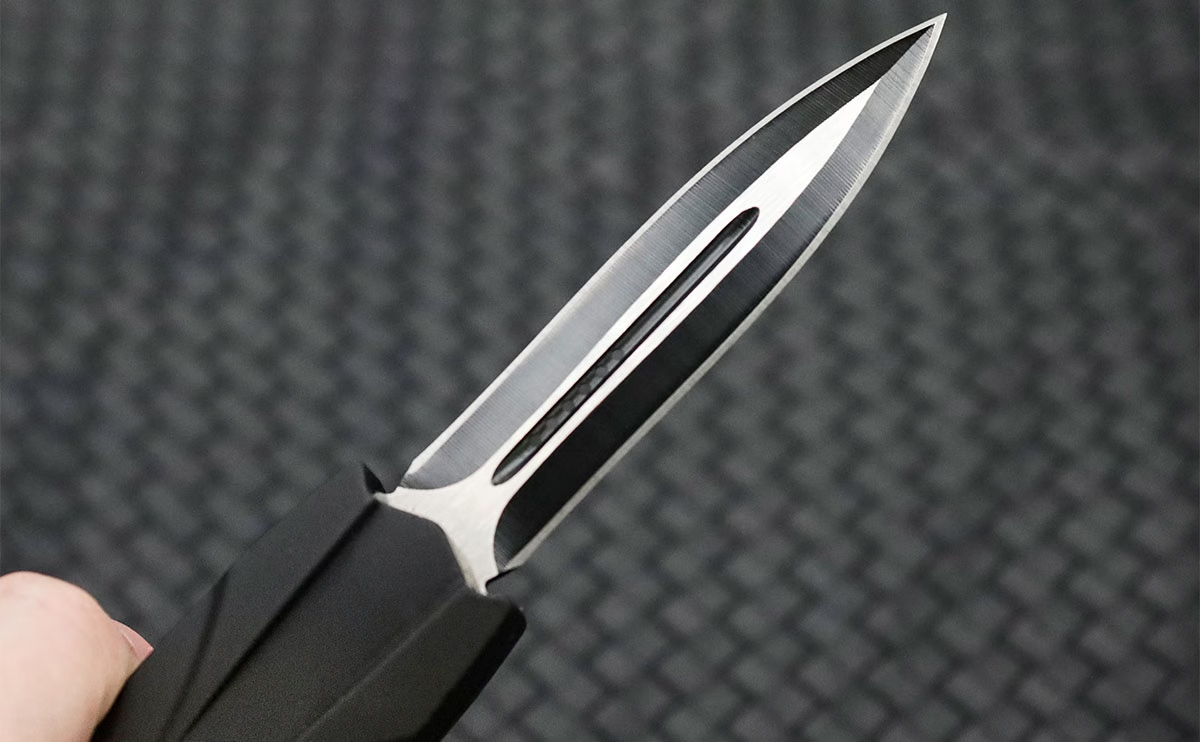
An OTF knife, or “Out The Front” knife, is a type of automatic knife that features a unique mechanism, where the blade is deployed and retracted directly from the front of the handle. This design provides a rapid and efficient way to deploy the blade with a simple push of a button, making OTF knives incredibly popular in tactical, self-defense, and everyday carry (EDC) contexts. With their sleek, modern design and ease of use, OTF knives have become a staple for knife enthusiasts and professionals alike.
Table of Contents
The Anatomy of an OTF Knife
Key Parts of an OTF Knife
The basic components of an OTF knife include the handle, blade, firing button, and the internal mechanism that drives the blade in and out of the handle. OTF knives are generally composed of durable materials such as aluminum or steel, ensuring the knife is both lightweight and strong.
1. Handle: Typically made of durable metal or polymer, the handle houses the internal mechanism and provides the user with a firm grip.
2. Blade: The blade is usually made from high-quality stainless steel, which is sharp, rust-resistant, and durable for various tasks.
3. Firing Button: This is the key mechanism used to deploy the blade. Pressing the button activates the internal spring mechanism, causing the blade to shoot out of the front of the handle.
4. Spring Mechanism: The spring mechanism is responsible for both the deployment and retraction of the blade. It’s this spring action that differentiates OTF knives from other types of folding knives.
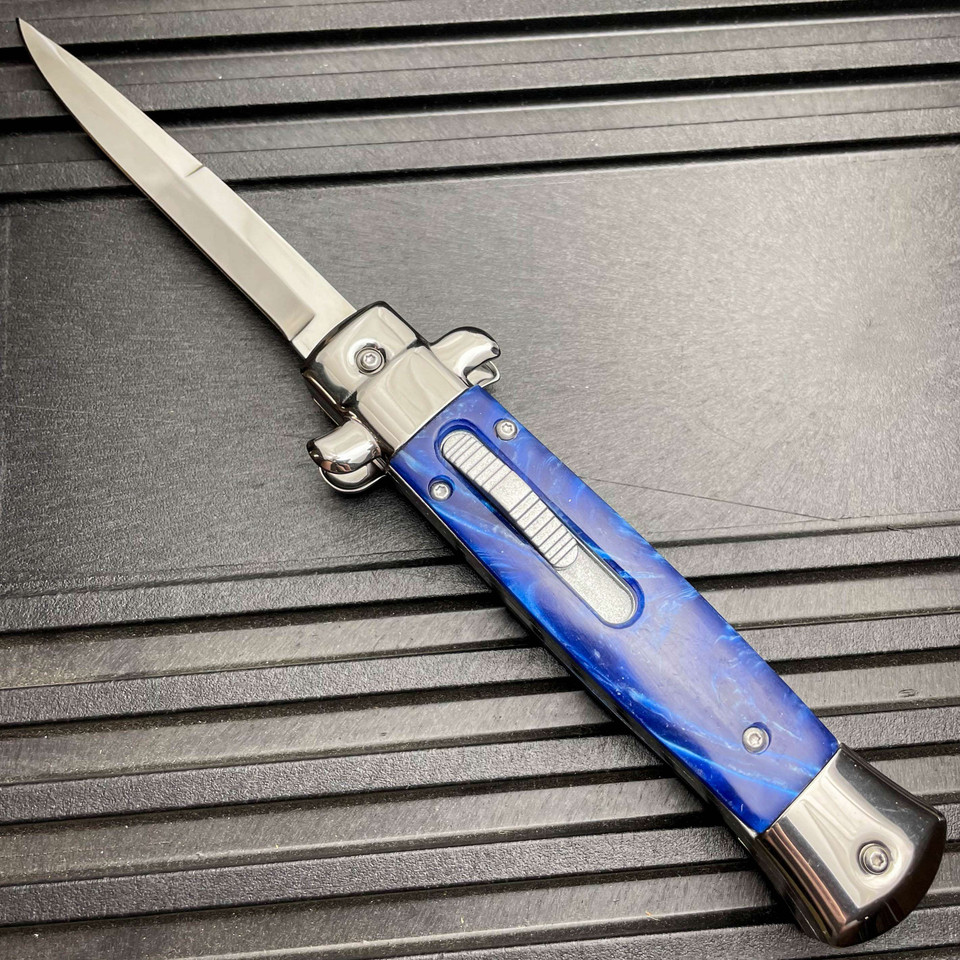
Blade Mechanism and How It Works
OTF knives operate on a push-button spring mechanism that opens and closes the blade with ease. When the user presses the button, a spring inside the handle forces the blade outward, where it locks into place. The mechanism is designed to be both fast and secure, offering one-handed deployment and a reliable lock that prevents accidental closure. This blade mechanism is what makes OTF knives so unique compared to traditional folding knives, where the blade typically opens from the side.
Types of OTF Knives
There are several variations of OTF knives, each designed for specific purposes and user preferences. The two most common types are single-action and double-action OTF knives.
Single-Action OTF Knives
Single-action OTF knives deploy the blade with a button push, but the blade must be manually retracted by pulling the button back or using another mechanism. This type is often preferred for simplicity and ease of use.
Double-Action OTF Knives
Double-action OTF knives, as the name suggests, allow both the deployment and retraction of the blade with a single button. By pressing the button in one direction, the blade shoots out, and by pressing it again, the blade retracts. These knives are generally more expensive and offer greater versatility and speed.
Dual-Edge OTF Knives
Dual-edge OTF knives feature a blade with two cutting edges, making them ideal for more specialized tasks. These knives tend to have a symmetrical blade shape, offering enhanced cutting versatility for both push and pull cutting motions.
History of OTF Knives
Origins and Evolution of the OTF Knife
OTF knives trace their origins to the early 20th century, with their roots firmly planted in military and tactical use. The earliest versions of these knives were designed to be quick to deploy in combat situations. Over time, the design of OTF knives has evolved, with manufacturers focusing on improving the blade’s mechanism, handle material, and overall reliability.
Military and Tactical Use of OTF Knives
OTF knives have become essential tools for military personnel, law enforcement officers, and emergency responders. The quick blade deployment makes them highly effective in close-quarters situations where speed and efficiency are crucial. As a result, many military forces around the world rely on OTF knives for utility, self-defense, and survival situations.
Benefits of Using an OTF Knife
Speed and Efficiency
One of the key advantages of OTF knives is their speed. With a single press of the button, the blade is deployed quickly, which can be critical in urgent situations where time is of the essence.
Safety Features
Many OTF knives come with safety mechanisms to prevent accidental deployment. This feature makes them safer to carry, especially in environments where the knife may come in contact with other objects in your pocket or gear.
Portability and Convenience
The compact nature of OTF knives makes them highly portable. They can easily fit into a pocket or a bag, making them a great option for everyday carry (EDC). Their ease of use and lightweight construction ensure that users can carry them without added bulk.
Legal Considerations for OTF Knives
OTF Knives as Switchblades
OTF (Out the Front) knives are often categorized as switchblades due to their similar mechanism of automatic blade deployment. While the term “switchblade” traditionally refers to knives with a blade that deploys from the side when a button or switch is pressed, the distinction between an OTF knife and a traditional switchblade is primarily the direction in which the blade extends. Despite this design difference, OTF knives are frequently treated the same way as switchblades under many legal systems because both types of knives feature an automatic opening mechanism.
Legal Classification of OTF Knives as Switchblades
In many jurisdictions, the legal classification of knives revolves around their method of opening. As a result, OTF knives are often considered automatic knives or switchblades, which may subject them to certain restrictions, particularly in regions where automatic knives are heavily regulated. The automatic opening feature is the critical factor that influences whether an OTF knife is considered a switchblade, even though the blade deploys from the front instead of the side.
Legal Implications of OTF Knives as Switchblades:
Federal Laws (United States): Under the Federal Switchblade Act of 1958, the possession and transport of automatic knives are heavily regulated. Since OTF knives use an automatic opening mechanism, they are often treated as switchblades under federal law, which prohibits interstate transport of switchblades unless they meet specific criteria. However, state laws may vary significantly.
State and Local Laws (United States): Some states, like California, Illinois, and New York, have strict laws regarding switchblades, which can include OTF knives. These states often classify any automatic-opening knife, including OTF knives, as illegal to carry or possess. On the other hand, Texas and Florida have more lenient laws regarding the ownership and carrying of OTF knives, considering them as legal tools for self-defense or tactical use in certain situations.
International Laws: In countries like Canada, Germany, and Australia, OTF knives are often classified as automatic knives, and their possession and use may be restricted or regulated by law. For example, in Canada, the Criminal Code prohibits the possession of switchblades, which includes many OTF knives. Similarly, in Germany, automatic knives, including OTF knives, are subject to stringent regulations.
The Impact of OTF Knives as Switchblades on Ownership and Use
The classification of OTF knives as switchblades can affect their legal status and the conditions under which they can be carried or owned. Depending on local laws, OTF knives may be restricted in terms of:
· Carrying them in public: In many places, it may be illegal to carry an OTF knife in public unless it is for a specific, legal purpose such as for professional use or in a survival situation.
· Interstate transport: In regions with strict laws on switchblades, transporting an OTF knife across state or national borders may be illegal unless the individual holds a special permit or falls under a specific exemption.
· Selling or purchasing: Some jurisdictions may restrict or regulate the sale of OTF knives. In areas where switchblades are illegal, you may find that purchasing or selling an OTF knife is prohibited or subject to heavy regulation.
While the exact definition of a switchblade can vary by jurisdiction, OTF knives are frequently grouped under the same legal category due to their automatic blade deployment mechanism. This automatic feature often makes OTF knives subject to similar laws and restrictions as traditional switchblades. However, due to their unique blade extension mechanism (frontward deployment), there may be some differences in how they are viewed legally in specific regions.
How to Properly Use an OTF Knife
Basic Handling and Safety Tips
When using an OTF knife, it’s important to handle it with care. Always point the blade away from your body and ensure that the locking mechanism is fully engaged before using the knife. Additionally, it’s crucial to never force the blade open or closed, as this can damage the internal mechanism.
Best Practices for Deployment
To deploy an OTF knife, press the button firmly and allow the blade to shoot out fully. Make sure the blade locks into place securely before using it for any tasks. To retract the blade, press the button again, ensuring that it retracts smoothly back into the handle.
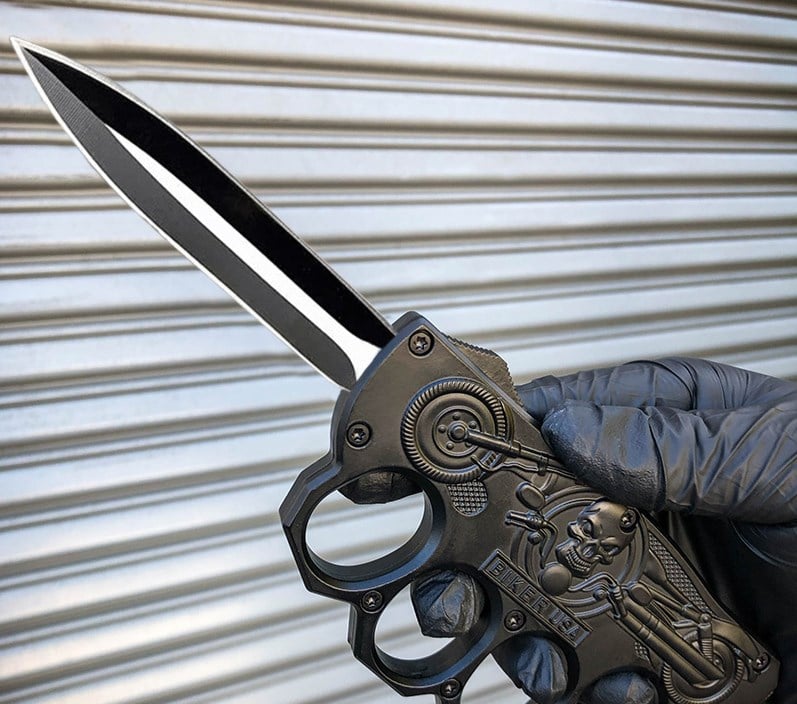
Maintenance and Care for OTF Knives
Regular Cleaning and Lubrication
To keep your OTF knife functioning smoothly, regular cleaning and lubrication are necessary. After each use, wipe down the blade to remove any dirt or debris, and lubricate the internal mechanism to prevent rust or stiffness.
Blade Sharpening Techniques
OTF knives, like all cutting tools, require periodic sharpening. Use a sharpening stone or a honing tool to maintain a sharp edge on the blade. Be sure to follow the blade’s original bevel to ensure an even and effective edge.
Common Uses of OTF Knives
Everyday Carry (EDC)
OTF knives are often used as everyday carry tools, thanks to their portability and ease of use. They are ideal for opening packages, cutting ropes, or performing small utility tasks throughout the day.
Tactical and Self-Defense
In tactical scenarios, the speed of deployment is crucial. OTF knives are favored by law enforcement officers and military personnel for their ability to quickly deploy the blade in self-defense or emergency situations.
Collecting OTF Knives
OTF knives are also popular among collectors due to their intricate mechanisms and varied designs. Many enthusiasts appreciate the craftsmanship and unique features of limited-edition OTF knives, which can make for valuable additions to any collection.
How to Choose the Right OTF Knife
Factors to Consider When Buying an OTF Knife
When purchasing an OTF knife, consider factors such as blade length, material, handle design, and the mechanism used for deployment and retraction. It’s also important to consider your intended use—whether you need it for self-defense, tactical operations, or everyday tasks.
FAQ: What is an OTF Knife?
1. What does “OTF” stand for in OTF knives?
OTF stands for “Out The Front,” which refers to the mechanism of the knife where the blade deploys and retracts from the front of the handle. This unique design allows for quick, one-handed operation, making it highly popular for self-defense and tactical uses.
2. How does an OTF knife work?
OTF knives use a spring-loaded mechanism to deploy and retract the blade. Pressing the button on the handle activates the spring, causing the blade to shoot out of the front of the handle. To retract the blade, you simply press the button in the opposite direction. The blade locks into place when fully extended, ensuring it’s secure during use.
3. Are OTF knives legal to carry?
The legality of carrying an OTF knife varies depending on local laws. In some areas, they are legal to carry, while in others, automatic knives are restricted or prohibited. Always check your local knife laws before purchasing or carrying an OTF knife to ensure compliance.
4. Can you use an OTF knife for daily tasks?
Yes, OTF knives are suitable for everyday tasks such as opening packages, cutting rope, and general utility work. However, they are primarily designed for quick deployment in self-defense or tactical situations, making them ideal for emergency use as well.
5. How do I maintain an OTF knife?
To maintain your OTF knife, regularly clean and lubricate the internal mechanism, especially after each use. Keeping the blade sharp is also essential, and you can use sharpening tools like a stone or honing rod to maintain the blade’s edge. Ensure that the locking mechanism remains smooth and secure to avoid malfunctions.
6. What are the advantages of a double-action OTF knife?
A double-action OTF knife allows for both deployment and retraction of the blade with a single push of the button. This makes it quicker and more efficient than a single-action OTF knife, offering users the ability to operate the knife with one hand, even under stressful or time-sensitive conditions.
How to Safely Carry an OTF Knife
EDC and Tactical Carry Options
Carrying an OTF knife as part of your everyday carry (EDC) setup or tactical gear is common, but safety should always be a priority. Many OTF knives come with safety locks to prevent accidental deployment, which is essential when the knife is stored in a pocket or bag. If you’re carrying an OTF knife for tactical purposes, you should ensure that it’s easily accessible but secure enough to avoid unwanted activation.
Using a Sheath for Protection
If you’re planning on storing your OTF knife in a bag, pocket, or belt, using a sheath can offer an extra layer of protection. A sheath helps protect the blade from dirt, moisture, and physical damage. It also ensures that the blade doesn’t accidentally deploy when stored, reducing the risk of injury.
The Future of OTF Knives
Technological Advancements in OTF Knife Design
As technology advances, OTF knives are expected to evolve in terms of their materials, blade mechanisms, and safety features. New developments may lead to even faster deployment systems, more reliable locking mechanisms, and lighter, more durable materials. Innovations such as hybrid blade technologies (e.g., combining straight and serrated edges) and integration of non-metallic materials for better durability are also areas that are being explored.
The Growing Popularity of OTF Knives
With the increasing demand for tactical and self-defense tools, OTF knives have become more mainstream. Manufacturers are continuing to innovate and improve the design, making these knives accessible to a broader audience. As OTF knives become more widely available, the potential for new uses—such as in outdoor survival gear and even everyday carry—will likely continue to expand.
Conclusion
Is an OTF Knife Right for You?
OTF knives are versatile, efficient, and secure tools that offer a unique approach to blade deployment. Whether you are a collector, a tactical professional, or someone looking for a reliable tool for everyday use, an OTF knife can meet your needs. By understanding the different types, mechanisms, and legal considerations associated with these knives, you can make an informed decision about whether an OTF knife is the right addition to your gear. Always ensure that you are following local regulations and maintaining your knife for optimal performance.
Final Thoughts
The OTF knife’s combination of fast blade deployment, portability, and safety features makes it an excellent choice for various applications. Whether used for tactical operations, self-defense, or as an EDC tool, these knives are designed to offer speed, efficiency, and reliability. As long as you consider the laws in your area and follow proper care guidelines, owning and using an OTF knife can be a rewarding experience.

